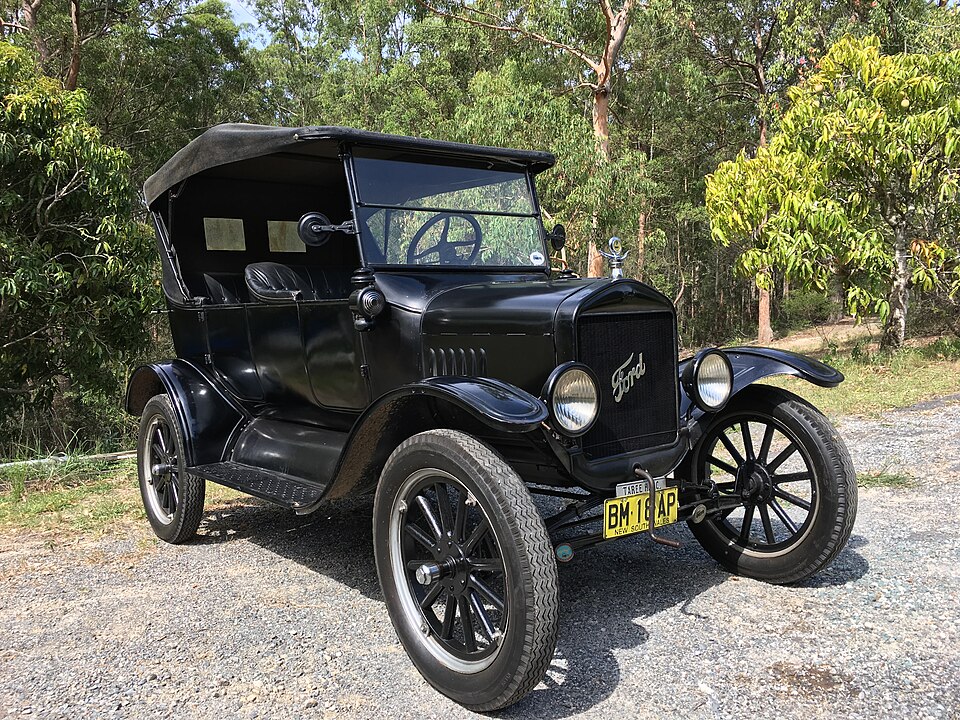
When were the first colored cars? The first real colored cars became available in the 1920s, but before that, there was a choice of a few colors, although they had to be custom painted.
When we go to buy a car these days, after we choose from the thousands of available models available, we then have to choose from the available colors. There are roughly 60 major car brands in the world today (Toyota, Ford, etc), and they sell an average of 15 models each. Some sell far more and some far fewer. Then there are many versions of each model, such as engine options. Let’s say an average of 10 versions. If you multiply those numbers together, you get a fairly good estimate of 9,000 currently available cars. You can then choose your color. You can have the color that the manufacturers offer, or you can have the car custom painted. Interestingly, 80% of the cars on the road are either white, black, silver, or grey. The next 18.2% is made up of blue, red, and green. And all of the other colors you see come in the last 1.8%. That’s a lot of choice. It might just be easier to have one color, the way some cars used to be sold.
The car was invented in 1886 by Karl Benz. It is difficult to credit one person, though, because the car was a culmination of a lot of small inventions that came in increments. Still, Benz’s Motorwagen is considered to be the first automobile. Car technology improved over the coming decades, but cars were still rare and very expensive. It took the vision of Henry Ford to bring the price down and to make cars accessible to everyday people, starting with his Model T Ford. Ford introduced his Model T in 1908, and his goal was to sell a lot of them. He knew that to do that, he would need to make them as cheaply as possible. He did this in several ways. The first was to get the materials as cheaply as possible. This was done by using something called vertical integration, where one company owns all of the companies involved in the manufacturing of a product. Ford owned the mines to get the coal and metal, he owned the steel mills, the timberland, the rubber plantation, and even a railroad to get the materials to where they needed to be. This meant he could keep the prices down. Then he introduced the assembly line. He didn’t invent it, but he did heavily use it. Cars had been made by hand, with a few people making the whole car. Ford realized it would be faster if the cars moved from station to station and each person at a location was responsible for one or two jobs. Faster production meant more cars, which meant cheaper cars. The third thing was to have only one model. The idea of lots of different styles of cars hadn’t yet come about, but even if it had, making the same product would be cheaper. And lastly, it was to have all the cars be black.
The car was the successor to the horse-drawn carriage, and those had often been painted with bright colors. The problem with it on cars was that it was expensive to apply the paint, and it took a very long time to dry, sometimes up to a week. At the time, there was no way of binding the paint to the surface, and it would peel off or turn yellow. Some early cars were painted, but it wasn’t easy; it made them very expensive, and it didn’t hold their color. When Ford introduced the Model T in 1908, in the beginning it was available in gray, green, blue, and black. However, Ford quickly realized that different colors slowed down the manufacturing process, and if he wanted to make cheap cars, he needed to make them as quickly as possible. So, in 1914, six years after the Model T was introduced, Henry Ford decided on his famous “the customer can have a car painted any color that he wants so long as it is black”. The pigment used in black paint at the time, carbon black pigment, was the cheapest paint available, and could be mixed with bitumen, helping it stick to the metal and making it very durable. And so, Model Ts became exclusively black. And many other car makers followed suit.
Different colored cars only really became available in the 1920s when paint improved. Different oils were used that made the paints easier to apply and faster to dry. Spray paint guns were invented as well, which shortened the time it took to paint a car. Then it was discovered that nitrocellulose lacquer (the same material movie film reels were made of) could be mixed with the paint, and it would make the paint more durable and dry even faster. General Motors worked with a chemical company called DuPont to make these lacquer-based paints and began offering their cars in a variety of colors to compete with Ford’s black Model T, which began to look old-fashioned. It took a while to catch on, but once it did, there was no going back. Then, after World War 2, paint that resisted the sun and didn’t yellow was invented, and we’ve never looked back. Although these days, most of us only choose white, black, grey, or silver. And this is what I learned today.
Sources
https://en.wikipedia.org/wiki/Car_colour_popularity
https://en.wikipedia.org/wiki/Nitrocellulose
https://www.ppg.com/en-US/autocoatings/color/history-of-color
https://universalpaints.co.za/the-evolution-of-car-colours
https://www.usatoday.com/story/news/2023/06/06/when-were-cars-invented/11727591002
https://en.wikipedia.org/wiki/Ford_Model_T
https://corporate.ford.com/articles/history/the-model-t.html
https://www.history.com/this-day-in-history/december-1/fords-assembly-line-starts-rolling
https://richarddurant.substack.com/p/vertical-integration-and-the-auto
Image By ModelTMitch – Own work, Public Domain, https://commons.wikimedia.org/w/index.php?curid=69615054
